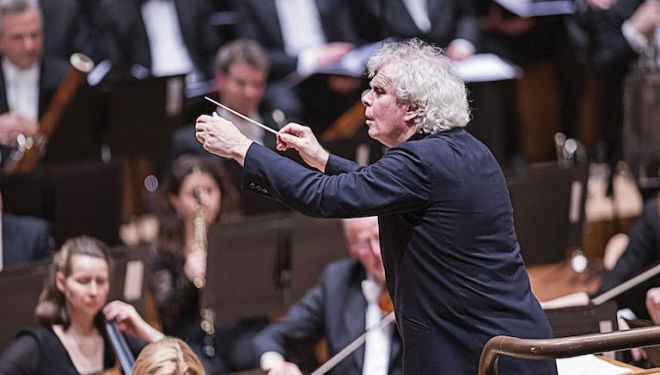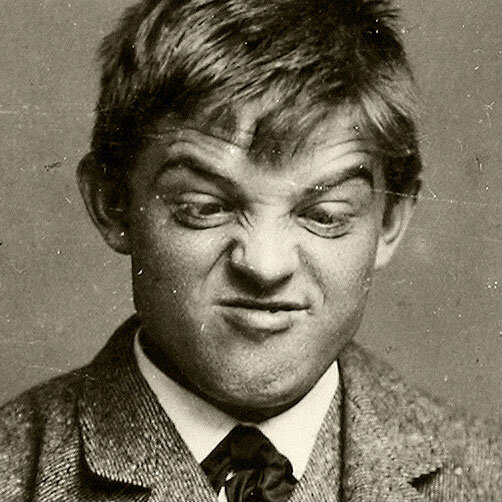Simon Rattle and the London Symphony Orchestra at the Barbican in Sibelius Symphony no 7, Hans Abrahamsen's Let Me Tell You (with Barbara Hannigan) and Carl Nielsen Symphony no 4 . Rattle has conducted one of the finest Sibelius 7th's on record, and done it live numerous times, so no surprises expected : this was good, but the real fun was yet to come.
Rattle conducted Hans Abrahamsen's Let Me Tell You better than most of the many who have conducted the piece over the last few years, which is saying something, since it's been done so often and by so many. Just as Sibelius was cursed by the popularity of Valse triste at the expensen of his more substantial work, Let Me Tell You has become the curse of Abrahamsen. Contemporary music for those who don't like contemporary music ! At roughly 35 minutes, it's longer than all the vocal music put together that Abrahamsen has written in his long and productive career. It's good enough but not typical of his greatest work. Let Me Tell You was created as a vehicle for Barbara Hannigan, so it fits her voice so well that she could be singing it well into later years. Not that there were any problems here : she's nailed it so perfectly that she hardly needs to do much more. The fans have come for her, and her persona. Rattle, on the other hand, made the orchestra sing , revealing the beauty in the music itself. : shimmering, liquid lines that flow and circulate, wrapping round the voice. this l;oveliness is poison : Ophelia kills herself by drowning, throwing herself into the vortex of a stream. Syllables fragment and reform, like droplets of water reflected in light - wonderfully delicate textures created by harp, celeste, and percussion with tubular bells and tiny wooden objects scraped and beaten, making sounds like grasses blowing in the wind. Sounds of nature, too subtle and too elusive to identify, reminiscent of Abrahamsen's greatest works like Schnee and Wald, though Hannigan takes precedence. "Music is pictures of music", Abrahamsen once said. "That is a strong underlying element in my world of ideas when I compose - as is the fictional aspect that one moves around in an imaginary space of music. What one hears is pictures - basically, music is already there." In Let Me Tell You, Abrahamsen collaborated with Paul Griffiths, the author and music historian, whose books on modern music are still, after 30 years, the best informed. In comparison, The Rest is Noise is Reader's Digest.
The revelation of the evening was Rattle's appoach to Carl Nielsen's Symphony no 4 op 29, The "Unextinguishable" (Det Uudslukkelige). This, too, is a staple in Rattle's repertoire, but this performance was inspired. The sharp attack in the opening bars contrasted with the lyrical first theme, zig zag chords introducing a more vigorous theme, produced here with a swagger, followed by quieter figures, like prancing footsteps. Sassy, expansive figures against moodier passages, exuberance underlined by percussion, winds and brass. I thought of the series of photographs Nielsen was so proud of, where he grins and grimaces and hams up for the camera (see more here). The Four (and more) Temperaments ! Just when we're getting into Nielsen's zany vibe, he slips into an elusive mood. If the symphony deals with the concept of life inextinguishable, it is presented in infinite variety, though the same basic ideas evolve and proliferate, like units in Mandelbrot diagrams, Nielsen anticipating later composers, even Boulez. The third movement, marked poco adagio quasi andante, wasn't a leisurely stroll, but purposeful. Woodwinds called, and the strings sprang back to life. Rattle drew forth an almost bluesy quality from the orchestra which was prescient, given that, even in wartime, one might sense a future where new influences might enliven the mix. For a moment dark forces emerged : percussion like gunfire, brass screaming tension, but gradually these gave way to joyous conclusion. Nothing sentimental or escapist about this despite the vaguely MGM drum rolls. That wasn't Nielsen's style, quirky and defiant as he was. Wonderful, precise playing from the LSO who respond to Rattle better than they do for nearly anyone else.









